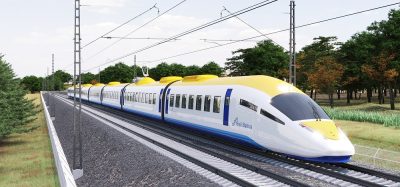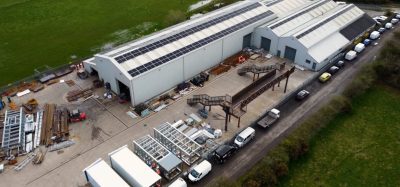An interview with Peter Jenkins, BDP’s Transport Architect Director
Posted: 21 September 2017 | Global Railway Review | No comments yet
With the final piece of the first network arch bridge in the UK (as part of the Ordsall Chord, see below) being put into place, Global Railway Review talks to its designer, Peter Jenkins, BDP’s Transport Architect Director, about the processes of designing transport projects and why these projects are so important to the communities they serve.
Congratulations on the latest development of the Ordsall Chord bridge with the two final steel cascades being put into place. What was your inspiration for its design?
The intention from the outset was to create a design which responded to both the unique context of the world’s first passenger railway and the position of the site straddling the city centres of Manchester and Salford. These informed concepts drew upon the arched forms of George Stephenson’s original bridge and the industrial heritage of the area.
Could you tell us more about the process of turning an original sketch for a big project like this through to its construction phase and what engineering aspects you have to keep in mind?
When the project is completed later this year I will have been working on it for six years; this time has included contributions from hundreds of individuals, all of whom can be proud of what has been achieved. Close collaboration with the consultant and contractors has enabled a unique and challenging design to be taken from a rough sketch through to reality. A complicated design like this requires highly experienced engineers and it is the role of the architect to understand the constraints and opportunities to create a successful end product.
What, in your opinion, does the Ordsall Chord mean for the north of England?
In a time when the Northern Powerhouse seems to be faltering, major infrastructure projects like this show how cost-effective schemes can unlock benefits from coast-to-coast across the north of England. Consultation with stakeholders has been continuous and essential, drawing upon local opinions and knowledge to ensure that the project delivers the right benefits to rail passengers throughout the region.
You are BDP’s new Head of Transport, what is it about designing transport projects that interests you most?
Transport projects influence and support the lives of huge numbers of people; it is highly rewarding to contribute to this infrastructure in terms of the connections they provide and the spaces we create. This can function on many different levels.
A station is much more than a passenger facility; it is a gateway to the town or city it serves, and can be a community resource independent of its transport function. A rail link such as the Ordsall Chord is supported on structures which influence the regeneration of surrounding sites. The challenge for us designers is to think outside the strict confines of the functional infrastructure to create inspiring places for all.
What current transport projects are you and BDP currently working on?
We are developing masterplans for Middlesbrough, Bradford and Halifax which will lay the seeds for the future of these stations and their surrounding areas. This work continues adds to our range of similar railway station projects, but the aim is to broaden our transport sector portfolio, building on bridge projects such as the Ordsall Chord, light rail work with Transport for Greater Manchester and aviation experience held in our Dublin office. Now that BDP is a part of the Nippon Koei group a major focus of our work in the immediate future is to secure overseas projects.







